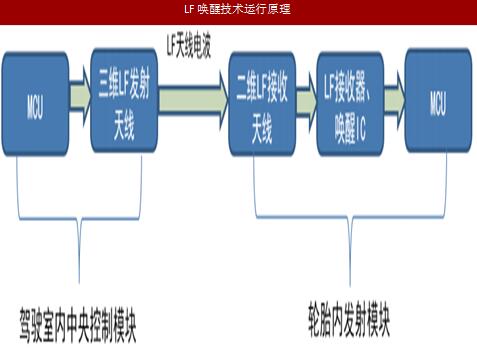Introduction to TPMS: The third largest car safety system after ABS and airbags
Compared with ABS, EBD, EPS and other automotive safety system products, TPMS has “proactive initiative”. With the attention paid to the active and passive safety of automobiles in recent years, the assembly rate of TPMS has shown a rising trend, becoming ABS and safety. The third largest safety system after the airbag.
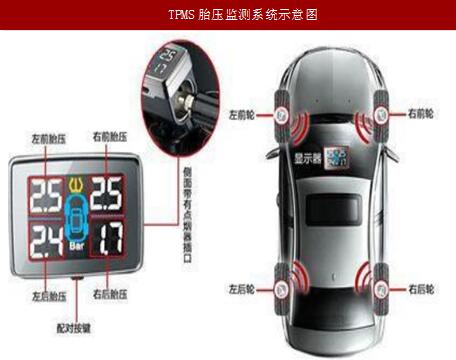
Figure: Schematic diagram of TPMS tire pressure monitoring system
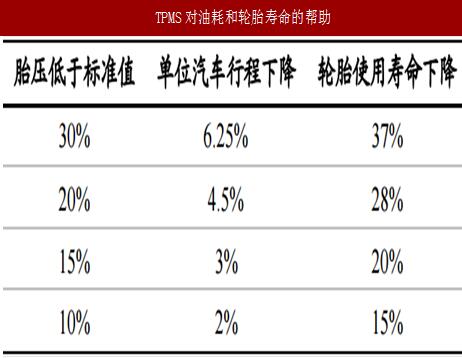
Table: TPMS helps with fuel consumption and tire life
Principles of PMS technology: Direct TPMS is the trend of the times
Direct TPMS vs. indirect TPMS
From the perspective of product classification of TPMS, it is mainly divided into two categories: indirect TPMS and direct TPMS, and direct TPMS is divided into active and passive two product forms. Indirect TPMS: Indirect TPMS (Wheel-SpeedBasedTPMS) refers to the comparison of the rotational speed difference between tires by the wheel speed sensor of the automobile ABS system to achieve the purpose of monitoring the tire pressure.
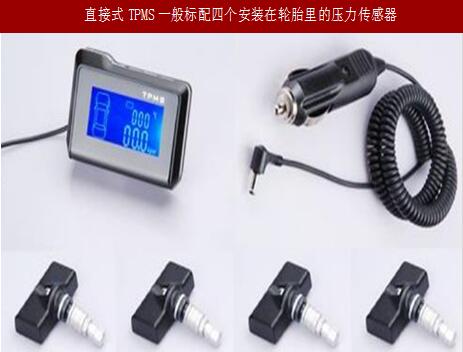
Figure: Direct TPMS is standard with four pressure sensors installed in the tire
Direct TPMS: The direct-type TPMS (Pressure-SensorBasedTPMS) uses a pressure sensor installed in each tire to directly measure the air pressure of the tire and transmit the relevant data. The active TPMS in the direct mode requires a separately powered pressure sensor in each tire to measure the tire's air pressure, and transmits the data to the controller module via a wireless modulation transmitter, and then projects the controller module data to the cab LCD. And when the tire pressure is too low, an alarm is issued. The passive controller module is a central transceiver, not an active receiver.
The transponder module in the tire receives the signal from the controller and uses the energy of this signal to transmit a feedback signal to the controller. The passive advantage is that no battery is needed in the tire, which increases the service life and performance under extreme conditions. However, due to the integration of the transponder in the tire, the manufacturers have not yet reached a unified standard, so the active standard with the mature standard will Dominant, so the direct TPMS we discussed in this report mainly refers to active TPMS.
Although the current TPMS products are divided into direct and indirect types, in fact, indirect TPMS products still have relatively large deficiencies compared with direct TPMS products. The first is that the indirect TPMS does not detect the sensor, but the ABS monitors the difference in the rotational speed caused by the deformation of the deficient tire under the gravity of the vehicle body. The monitoring effect is obtained when multiple tires are simultaneously deficient and the vehicle is driving at a high speed. They are not ideal, and their main advantage comes from the cost advantage brought by the high popularity of ABS.
The direct type is superior to the indirect TPMS in terms of accuracy, reaction speed, safety and compliance. The direct TPMS can directly display the absolute value of the tire pressure. This is superior to the indirect TPMS in terms of product performance. In addition, the price of direct TPMS has also dropped to a competitive level over time; on the other hand, indirect TPMS from the level of regulatory enforcement cannot meet the needs of major standards:
The US Road Safety Administration's NHTSA's request for tire pressure to deviate from the normal 25% alarm requirement cannot be met by the indirect TPMS, and the subsequent requirements cannot meet the regulatory requirements. The China Automobile Standards Commission usually gives a tire pressure of less than or equal to 75% of the recommended tire pressure of the vehicle. The time of the alarm request. Therefore, direct TPMS is superior to indirect TPMS in terms of product performance, cost advantage and regulatory policies. We believe that direct TPMS will become the only inevitable trend in the future development of TPMS industry.
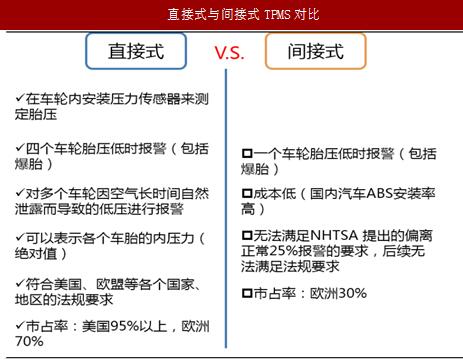

Table: Relevant performance requirements of the PTMS system
TPMS key design technical indicators
From the technical principle of direct TPMS, the direct TPMS is divided into two blocks: the transmitting end and the receiving end. The transmitting end is composed of a pressure sensor, an MCU chip, an RF transmitting antenna and the like, and the receiving end is composed of an RF receiving antenna, an MCU chip and an LCD display part. The operating principle of TPMS is shown in the figure below:
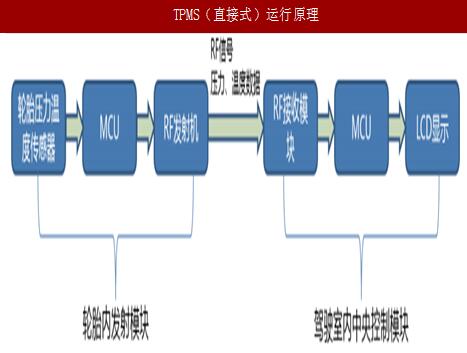
Figure: TPMS (direct) operating principle
From a technical point of view, the key indicators for measuring the quality of TPMS design are as follows: It is worth noting that LF wake-up technology, as a standard technology for high-end TPMS products, is often one of the key indicators for measuring high-quality TPMS products:
(1) Reliability in harsh environments: TPMS transmitter modules are directly assembled in automobile tires. The working conditions will face harsh environments such as rotation, vibration, high temperature, high pressure and humidity. As a safety system, reliability is of paramount importance.
(II) Valve-related design: TPMS mainstream technology adopts the scheme of integrating with the valve, so that the overall index of the TPMS module and the valve is the most important target.
(3) RF anti-interference ability and stability: RF as electromagnetic wave will be subject to electromagnetic interference from other equipment, and at the same time, under the joint action of vehicle metal parts and speed, the signal transmission and reception will be unstable, and the communication between modules without interference will be designed. The essential.
(4) LF (LowFrequency) wake-up technology: After the car is started, the central control module in the cab is powered on, and the low-frequency signal is transmitted. The LF antenna in the tire launching module receives the low-frequency signal and generates an induced voltage, which is converted into a wake-up signal to wake up the MCU. Start working, which saves battery.
At present, the TPMS operating frequency is 315MHz in North America and 434MHz in European standards.
